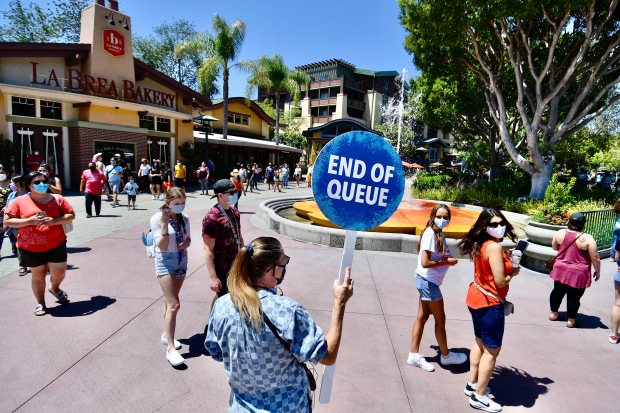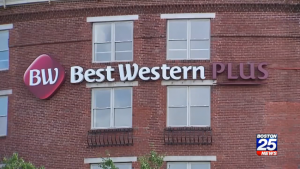California’s reversal on its path to somewhere near business-as-usual is an almost expected, largely needed but still “devastating” hit to the California economy.
Considering all the ugly trends reported on the pandemic’s spread, most of us knew the economy was going to pay a price — whether it was from consumer choices or government intervention.
Gov. Gavin Newsom on Monday, July 13 issued an order to pull back on reopenings for indoor operations of shopping malls, fitness centers, offices for non-critical sectors, nail and hair salons — and places of worship. Newsom acted as the saw rapidly increasing coronavirus cases, hospitalizations, and deaths following a broad economic reopening over the past several weeks.
The instant analysis by several Southern California business experts and economists is that Newsom’s pullback was necessary to help the state economy rebound. Too many consumers and businesses alike remained leery of a killer pandemic and limited their spending and hiring. Folks who ignored mandates to wear masks and keep physical distance from others only amplified the anxieties, both personal and financial.
Economist Mark Schniepp of the California Economic Forecast in Santa Barbara was a big believer in the strength of the California economy before the pandemic hit. He initially thought the economic fallout from the pandemic would be brief. In recent weeks, though, he’s become more concerned that businesses will not be able to easily regain their pre-pandemic strength. Monday’s news was another blow.
“Devastating, mostly to consumer confidence, ” he said. “Reversals, warranted or not, broadcast the notion that the pandemic is out of control and dangerous. This causes consumers to retreat further from their spending patterns and it is likely to generate a longer recovery period for them.”
California’s unemployment rate soared to 16.3% in May, just below April’s record high. “Stay at home” orders shut many businesses in late winter and kept workers away for much of the spring.
A limited job recovery raises key questions. How will items like house payments or rents get paid when the federal $600-a-week unemployment benefit ends July 31? With California joining other states in slowing, if not reversing their pullbacks, will the economic stimulus need to be extended?
“This is making a necessary U-turn,” says economist Anil Puri of Cal State Fullerton. “But it will impose greater economic pain and further delay the normal operation of the state’s economy. Hopefully, it can be implemented judiciously by greater relative tightening of the ‘hot regions’ and sparing others.”
Mask up
Look, one reason the state’s economy can’t regain its former strength is the noteworthy level of public reluctance to wear masks and practice social distancing. These practices are good medicine as well as good for business, too.
It’s also challenging to juggle what could be seen as conflicting mandates. Take the giant South Coast Plaza mall in Costa Mesa. It has closed its main shopping concourses but tenants with direct access outdoors can still welcome shoppers. And the mall continues to provide curbside pickup service for participating stores.
Yes, I know this reversal is harsh news for many business owners and their employees. And I understand asking “Why should my finances suffer to protect others?” The discussion can become a gut-twisting death vs. dollars debate. Yet without short-term-pain-for-long-term-gain thinking, the virus will either not go away or scare off an intolerable number of businesses and consumers.
“The governor made the right call,” says Eric Spangenberg, dean of UC Irvine’s Paul Merage School of Business, who sees this economic challenge as what professors call the “problem of the commons” — where self-interest overpowers the greater societal good.
“If we don’t look out for ourselves, someone needs to do so. Luckily, Newsom isn’t afraid to do so.”
In today’s highly divided world, somehow fighting the governor’s requests has become a political cause. But if “freedom” is the desired goal of beating the pandemic, folks will have to lose a little to regain a fully functioning economy.
“The virus isn’t going away and it isn’t political,” said Lucy Dunn, CEO of the Orange County Business Council. “To safely reopen businesses, we must look to those countries who faced the pandemic before us. They universally embraced face masks and distancing. And they are now starting to open up. We are not even through the first wave of this disease yet. Mask up and keep it up to slow the infection rate.”
Economist Robert Kleinhenz agrees that the economy won’t fully recover until the virus is contained.
“This is not an “either-or” situation. It’s an “if-then” situation,” he said. “If we can bring the virus under control through proper behavior, then sustained recovery will be possible. Until then, we will shut down, reopen, and so on, making it that much harder for businesses to get going again, and jeopardizing the long-run survival chances of more and more of those businesses. That’s not good for our local economy.”
Need for predictability
Peter Belisle, who oversees the Southern California offices of the JLL commercial real estate brokerage, sees hope in efforts to make businesses work better in the pandemic era.
“Not to downplay the seriousness of this, but I continue to see innovation at both the landlord and tenant level” such as the burgeoning concept of outdoor dining expanding into public spaces like sidewalks and parking spots, he says. His own business recently went back to in-office operations and the safety measures required to do so were not as difficult to adapt to as initially feared.
But Belisle was blunt. The uncertainty created by the pandemic’s health risks are a major business challenge. His talks with real estate professionals and coworkers around the globe suggest that stricter lockdowns may be required to gain control of coronavirus.
“As hard as this is, something is to be said for getting this thing under control where there’s some predictability. Once you know the landscape, you can work with it. What can you do, day to day, week to week.”


























